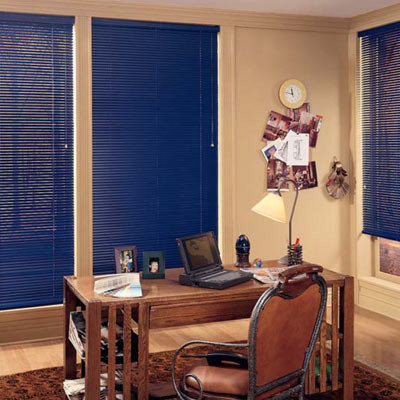Choice and variety are fundamental expectations in 21st-century America. When I was a kid, coffee came either black or with cream and sugar. Nowadays I could fill a small dictionary with the list of coffee choices at my nearest Starbucks. In fact, Ineed a dictionary to explain all the different choices.
When it comes to window treatments, the choices have proliferated in a similar way. Having this kind of selection should be a blessing, not bewildering, so I’ve sorted out and defined some of the options to make the process easier for you.
Let’s start with some basics. “Blinds” generally refers to a hard treatment constructed from slats or vanes, which are adjusted by a manual pull cord, wand or remote control. (Just what we need: another remote control.)
Blinds are wonderfully adjustable; the slats are able to stay tightly closed for privacy and light control, or tilt open to allow just the amount of light you choose. When they are pulled up and stacked at the top of the window, they leave an unobstructed view.
The width of the slat will be your first decision. Blinds generally come in one of three standard sizes: ½ inch, 1 inch and 2 inches. The ½-inch slat is the most popular, because it gives homes a contemporary feel. The 1-inch version is a compromise between the narrowest and the widest blinds; they take less labor to manufacture than the ½-inch slats, and so are slightly less expensive.
People who want an old-fashioned or old-world look generally choose the 2-inch slats, which are reminiscent of older-style Venetian blinds. The slats can be arranged horizontally, like these …
Wood blinds — even faux wood ones — are another popular option. Wood brings a softer, more organic feel to windows than an aluminum blind does. If you go this route, realize that faux wood has a couple of advantages over the real thing: It can be substantially less expensive, and it’s not as susceptible to moisture issues, which makes it a great choice for bathrooms, kitchens and clammy climates. If you are going to use a painted wood blind, you might as well go faux. Nobody will be able to tell the difference.
The wood blinds shown here, by the way, have a top treatment that conceals the roll and clutch — always a good idea!
Then there are woven woods. Now, strictly speaking, woven woods are shades, not blinds. What’s the difference? Whereas blinds are hard and slatted or vaned, shades are soft and are usually constructed from materials on a continuous roll, with no adjustment for light. I’ll cover shades in an upcoming ideabook.
But because woven woods are made with a hard material, I am going to lump them in with blinds. Woven woods come in multiple styles, including grasses, reeds, jute and bamboo, like the ones shown here. Bamboo is a relatively sustainable product, which makes it one of my favorite choices.
Here is a caveat: Blinds are like most other products. You get exactly what you pay for. Inexpensive blinds may seem like a “why not?” choice, but consider whether they are coming from a country that regulates lead content in their products.
Also consider the weight of each slat. Will it ding and bend if you look at it cross-eyed? I am all for comfortable interiors that embrace scratches and dents, just not in my blinds. Are the cords feeble and easily breakable?
The bottom line is: Don’t be penny wise and pound foolish when purchasing blinds. Next time we’ll consider the wonderful choices out there in shades.




















